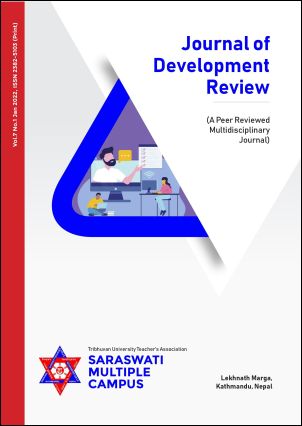Financial Performance of Nepalese Public Sector and Joint Venture Banks Using CAMEL Model
DOI:
https://doi.org/10.3126/jdr.v5i1.51131Keywords:
CAMEL model, commercial bank, financial performance, financial ratiosAbstract
Nepalese banking sector plays a crucial role in the economy due to its dominant position in the financial system, and hence the efficiency of the financial institutions is crucial for the whole economy, as bank failures become a threat on the banking system. This study analyses the relative performance of selected public and joint venture commercial banks of Nepal using CAMEL rating system and provides a relative ranking under each of the parameters independently. This study focuses on every aspect of financial performance measurement for the study periods of five years i.e. from 2015 to 2019. HBL was found to be able to maintain a higher level of capital and EBL to maintain a higher level of good performing loans and earnings efficiency, as well as SCB, was found to be able to maintain a higher level of managerial efficiency and ADBL to maintain a higher level of liquidity. The results of independent sample t-test showed no significant mean difference in capital adequacy, earning performance, and liquidity between public and joint-venture banks, but showed a significant mean difference in asset quality, and management quality between public and joint-venture banks has found.




